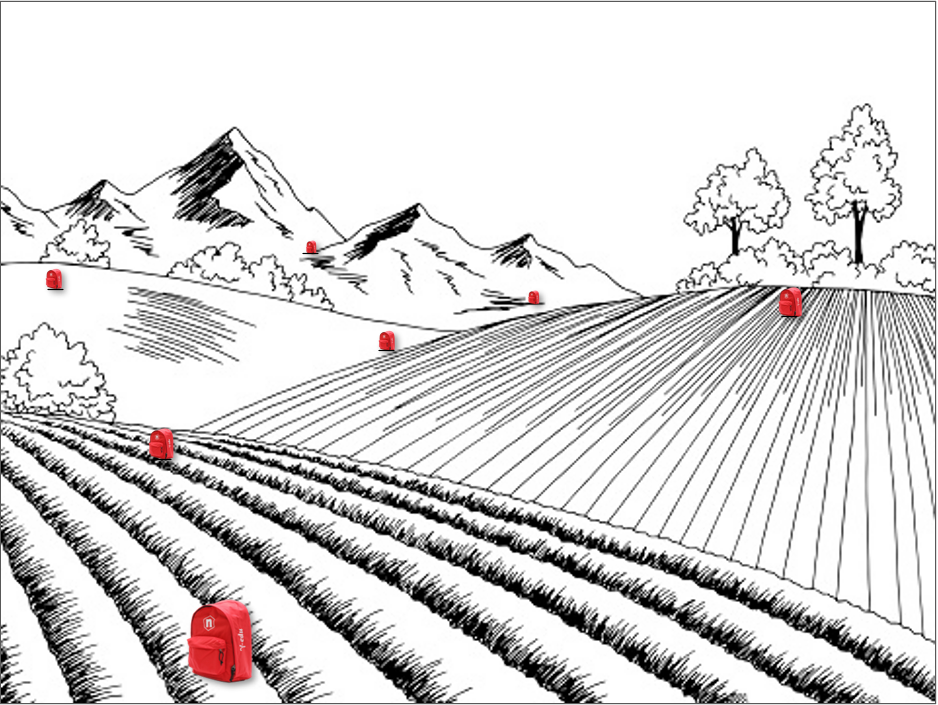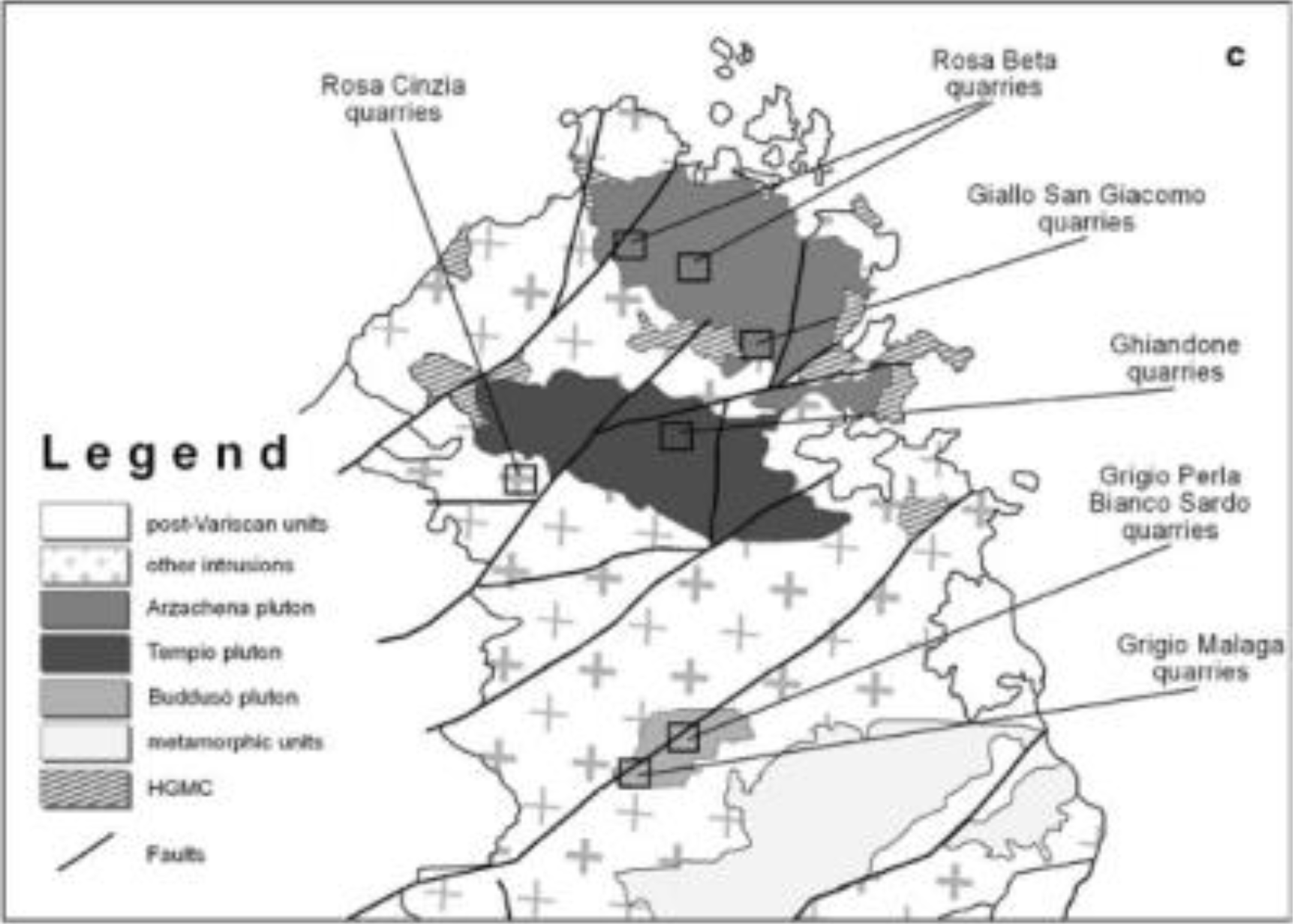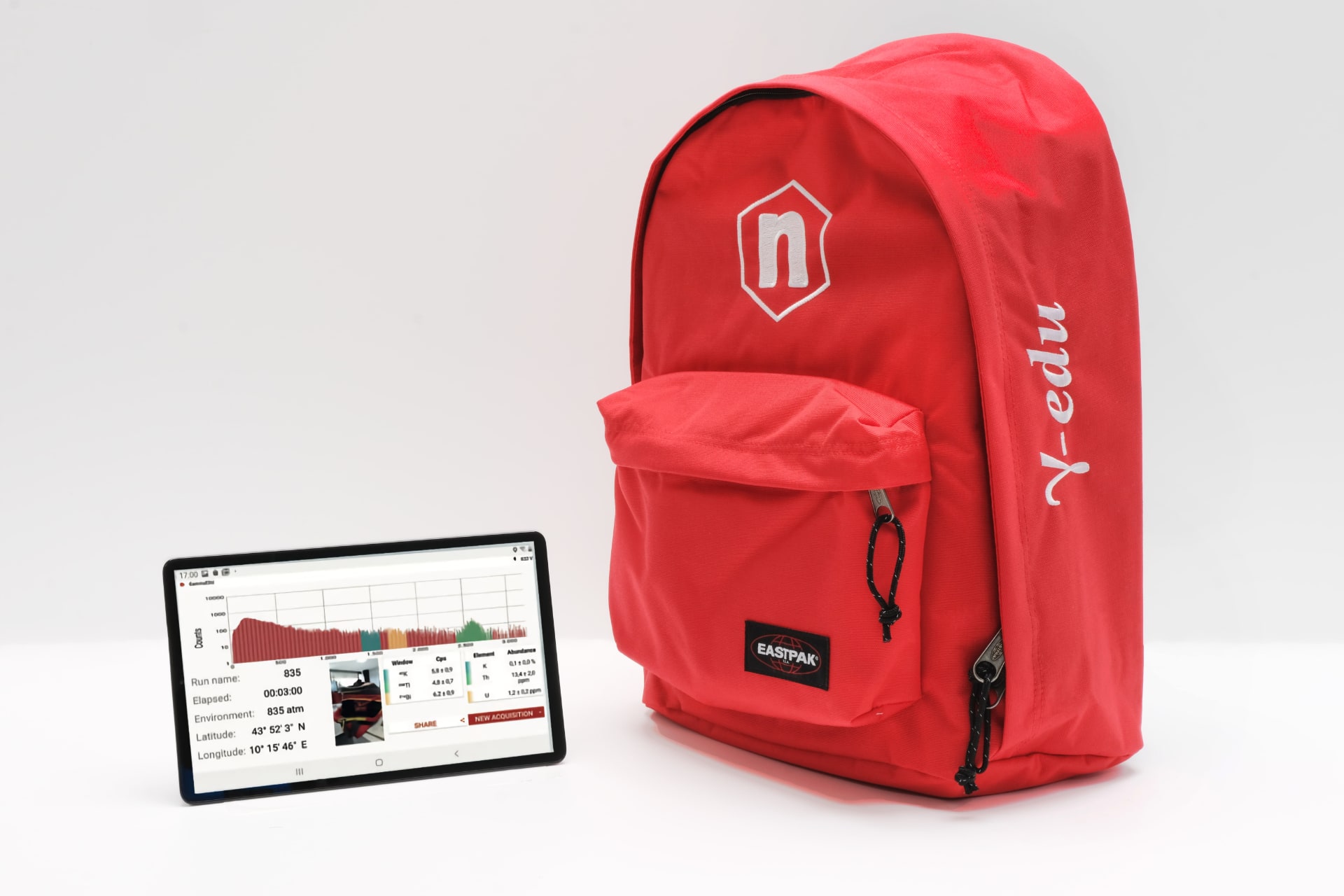| Difficult | Execution Time | Data Analysis | Radioactive Sources |
|---|---|---|---|
| Yes | No |
Hardware setup
This experiment guide is referred to the SP5640 educational kit.
Equipment: SP5640 – Backpack Detector
| Model | SP5640 |
|---|---|
| Description | Backpack Detector |
Purpose of the experiment
Large area survey to evaluate the radioactivity concentration of Uranium, Thorium, and Potassium.
Fundamentals
A geochemical exploration campaign aims at locating economic mineral deposits through the recognition of concentrations of chemical components, to be called as geochemical anomaly, in surface materials such as rocks, soils, stream sediments, glacial till, water, plants, and air. The radiological characterization of surface soil, in terms of Uranium, Thorium and Potassium, proves to be also a good tool to direct excavations for mines. The main advantages of using in situ measurements are quick feedback, a large sample size, immediate repeatability of the measurement and low management costs. The areas with an enormous geodiversity have a considerable variety of stone materials that can be used both as building materials and as ornamental elements. This enormous variety also corresponds to considerable variability in the abundance of radionuclides. The world average radioactivity content in the upper continental crust is (33 ± 7) Bq/kg for 238U, (43 ± 4) Bq/kg for 232Th and (727 ± 60) Bq/kg for 40K. Igneous plutonic rocks are characterized by relatively high concentrations of natural radionuclides varying over a wide range of up to 2000 Bq/kg for 40K, 600 Bq/kg for 238U and 900 Bq/kg for 232 Th.
Requirements
No other tool is needed.
Carrying out the experiment
- Power on the γ-stream inside the red backpack.
- Power on the tablet and associate the two devices via Bluetooth.
- Take care that the γ-stream internal battery is charged, otherwise use the external power system.
- Start the measurement campaign in land field and place the backpack on the floor almost 1 m far from the trees, manhole or other construction.
- Set the acquisition time to about 5 minutes and see the results. If the statistic is not enough increasing the acquisition time.
- Repeat the measurements along the survey area.

Experimental setup block diagram.
Results
Exemplary of in situ survey performed by using a portable NaI(Tl) scintillation detector for the determination of the radioactivity concentration of 40 K, 238 U and 232 Th on intrusive granite outcrops in Corsica-Sardinia (FR-IT).

Position of extractive districts in Sardinia where in situ measurements were performed.
| Granite Quarries | 40 K [Bq/kg] | 238 U [Bq/kg] | 232Th [Bq/kg] |
|---|---|---|---|
| Rosa Beta | 1144 ± 120 | 42.3 ± 7.1 | 55.0 ± 6.3 |
| Ghiandone | 1092 ± 198 | 56.3 ± 12.7 | 68.9 ± 10.4 |
| G. San Giacomo | 1335 ± 206 | 50.1 ± 13.8 | 61.9 ±9.4 |
| Rosa Cinzia | 1313 ± 64 | 56.0 ± 6.8 | 69.4 ± 3.4 |
| Grigio Malaga | 848 ± 121 | 34.5 ± 4.6 | 61.1 ± 5.5 |
| Grigio Perla | 1222 ± 155 | 39.1 ±5.2 | 60.6 ±5.7 |
| Bianco Sardo | 1269 ±64 | 44.8 ±7.1 | 51.6 ±8.8 |
Activity concentration of 40K, 238U and 232Th in situ measurements.


